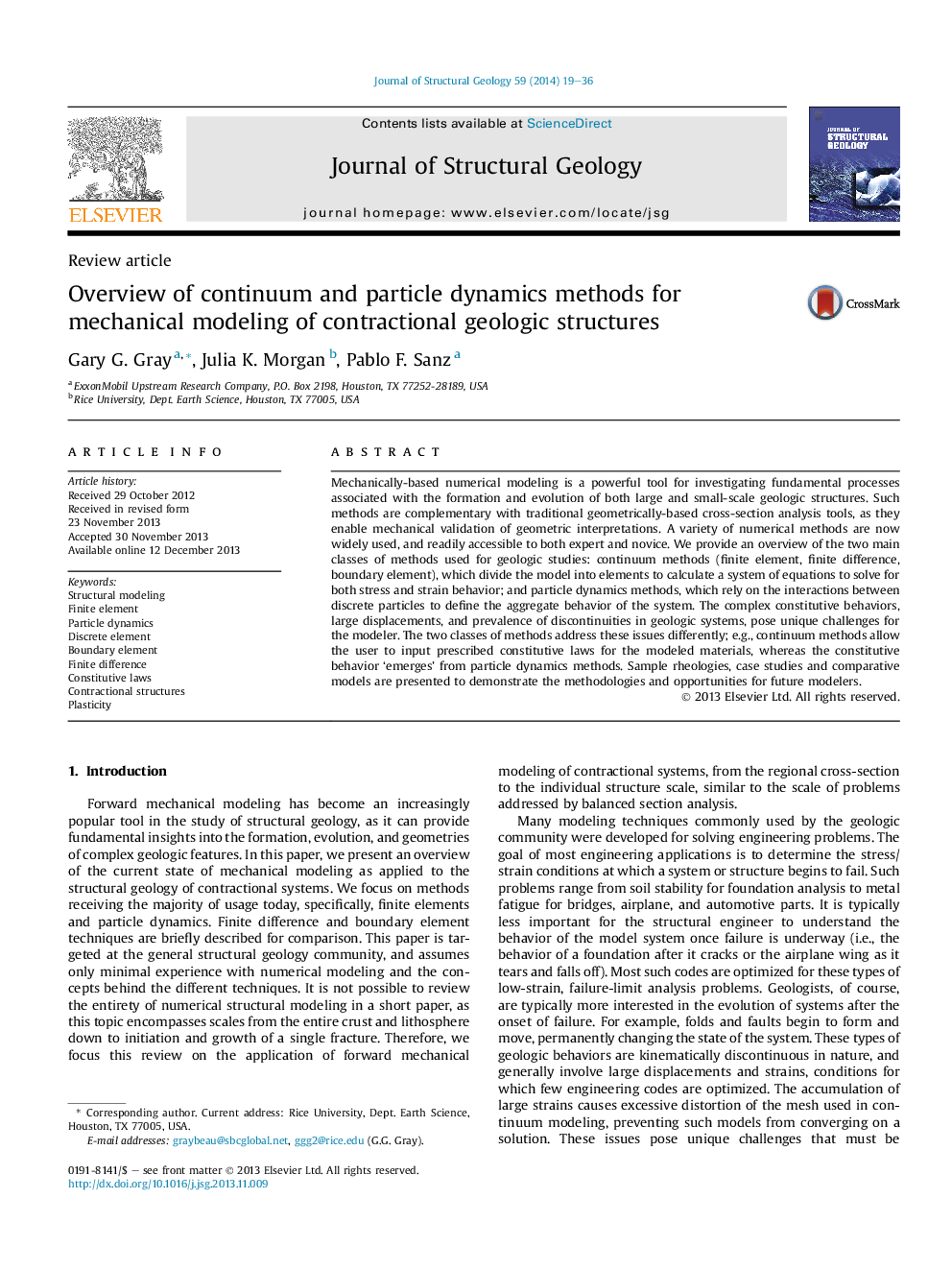| کد مقاله | کد نشریه | سال انتشار | مقاله انگلیسی | نسخه تمام متن |
|---|---|---|---|---|
| 4733118 | 1640518 | 2014 | 18 صفحه PDF | دانلود رایگان |
• This article summarizes the state-of-the-art in modeling of geological structures.
• Finite element and discrete element techniques provide the most modeling capability.
• A broad range of constitutive relationships are presented in relative detail.
• The authors explain the engineering vernacular in terms understandable to geologists.
• A comparative study demonstrates very similar results from FEM and DEM models.
Mechanically-based numerical modeling is a powerful tool for investigating fundamental processes associated with the formation and evolution of both large and small-scale geologic structures. Such methods are complementary with traditional geometrically-based cross-section analysis tools, as they enable mechanical validation of geometric interpretations. A variety of numerical methods are now widely used, and readily accessible to both expert and novice. We provide an overview of the two main classes of methods used for geologic studies: continuum methods (finite element, finite difference, boundary element), which divide the model into elements to calculate a system of equations to solve for both stress and strain behavior; and particle dynamics methods, which rely on the interactions between discrete particles to define the aggregate behavior of the system. The complex constitutive behaviors, large displacements, and prevalence of discontinuities in geologic systems, pose unique challenges for the modeler. The two classes of methods address these issues differently; e.g., continuum methods allow the user to input prescribed constitutive laws for the modeled materials, whereas the constitutive behavior ‘emerges’ from particle dynamics methods. Sample rheologies, case studies and comparative models are presented to demonstrate the methodologies and opportunities for future modelers.
Journal: Journal of Structural Geology - Volume 59, February 2014, Pages 19–36
